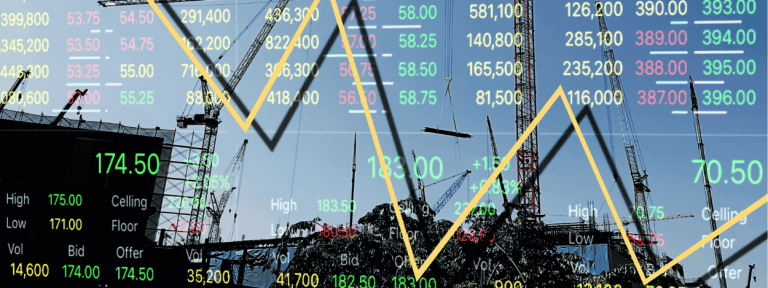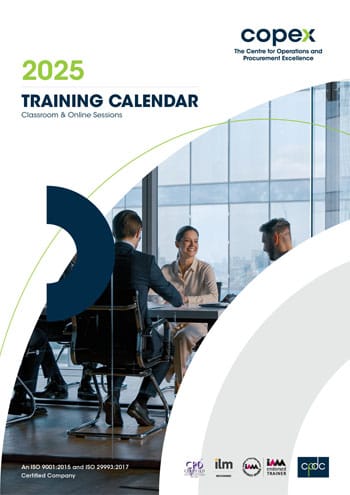
How to Manage Changing Stakeholder Expectations
7 mins readManaging changing stakeholder expectations is one of the most critical aspects of successful project and organizational leadership. Stakeholders’ needs and priorities are rarely static — they evolve with market shifts, internal project adjustments, emerging risks, and shifting strategic goals. As a result, expectation management is not a one-time task but an ongoing responsibility that demands adaptability, empathy, and foresight.
In today’s dynamic business environment, effective stakeholder management requires agility, transparency, and continuous communication. Leaders must be able to anticipate evolving interests, address concerns proactively, and maintain clarity even in uncertain situations. This includes managing stakeholder conflicts of interest, especially when priorities diverge or resources become constrained, and rebuilding trust with dissatisfied stakeholders when outcomes fall short of expectations. ➡️Managing Project Stakeholders Training
To navigate these challenges, professionals need structured communication frameworks, conflict-resolution techniques, and a deep understanding of stakeholder behavior. This article explores how to:
- Recognize early signs of shifting stakeholder expectations
- Manage and resolve conflicts constructively
- Rebuild and sustain trust after misalignment
- Monitor engagement effectiveness in both traditional and agile environments
By mastering these practices, leaders can strengthen relationships, enhance project resilience, and ensure stakeholder alignment remains consistent through every stage of change.
Why Stakeholder Expectations Change
Stakeholder expectations are dynamic, constantly shaped by internal and external influences. What stakeholders expect at the start of a project often evolves as new information emerges, priorities shift, or organizational realities change. Understanding the reasons behind these shifts is essential for maintaining alignment and sustaining long-term trust.
Key reasons stakeholder expectations change include:
- Shifts in project scope or business priorities: Adjustments in timelines, deliverables, or strategic direction can alter what stakeholders value most.
- External factors: Market fluctuations, new regulations, and competitive pressures can prompt stakeholders to reassess their expectations or redefine success criteria.
- Internal restructuring or leadership changes: When new decision-makers or reporting structures are introduced, perspectives and priorities often shift with them.
- Miscommunication or unclear objectives: Lack of clarity or inconsistent messaging can lead to assumptions, creating gaps between perceived and actual outcomes.
It’s important to remember that expectation management isn’t about control — it’s about alignment and adaptability. Successful leaders focus on continuous dialogue, ensuring stakeholders stay informed, involved, and confident as circumstances evolve. By proactively managing this alignment, organizations can minimize misunderstandings and keep relationships grounded in transparency and mutual respect. ➡️Stakeholder Engagement & Management Course
Recognizing the Signs of Changing Stakeholder Expectations
Successfully managing changing stakeholder expectations begins with the ability to recognize when those expectations start to shift. Stakeholders rarely announce changes directly — instead, subtle behavioral and communication patterns often reveal evolving priorities, growing dissatisfaction, or changing perceptions of project success. Identifying these early signals allows leaders to respond strategically before misalignment escalates into conflict.
Common indicators that stakeholder expectations are shifting include:
- New or more frequent feedback requests: Stakeholders seeking additional information or updates may signal growing concern or changing interest in project outcomes.
- Increasingly critical or vague input: When feedback becomes less specific or more questioning, it can indicate uncertainty or dissatisfaction with the project’s direction.
- Delays in decision-making or approval processes: Hesitation to approve plans or deliverables often reflects misaligned priorities or unresolved expectations.
- Disconnect between deliverables and satisfaction: Even if milestones are met, a decline in stakeholder enthusiasm or support may suggest that expectations have evolved beyond initial agreements.
To detect these changes proactively, organizations should implement continuous feedback loops through surveys, stakeholder meetings, and performance analytics. Regular communication and data-driven engagement tracking help identify subtle shifts early, enabling timely adjustments in messaging, project scope, or resource allocation. This proactive awareness ensures stakeholder alignment remains strong, even amid constant change. ➡️ Leading Through Stakeholder Influence Training
Core Strategies to Manage Changing Stakeholder Expectations
Effectively managing changing stakeholder expectations requires structured communication, clarity of purpose, and collaborative engagement. When expectations shift, leaders must realign objectives while preserving trust and transparency. The following strategies offer practical approaches to maintaining alignment and preventing conflicts as priorities evolve.
-
Reassess and Reconfirm Objectives
The first step in adapting to changing expectations is to revisit project goals and stakeholder priorities. Conduct structured discussions to understand new concerns, motivations, and success criteria.
- Facilitate one-on-one or group sessions to review objectives and ensure alignment.
- Document any revised priorities, scope changes, or decisions to maintain accountability.
- Secure formal acknowledgment or written confirmation from stakeholders to avoid ambiguity later.
This process ensures that all parties share a unified understanding of what success now looks like.
-
Maintain Transparent Communication
Transparency is vital when circumstances change. Stakeholders value honesty over perfection.
- Share updates frequently — even if results are uncertain or challenges are ongoing.
- Avoid withholding information, as this often breeds mistrust or speculation.
- Be clear about what is known, what remains uncertain, and what steps are being taken to address it.
Consistent, open communication builds confidence and demonstrates leadership integrity during times of change.
-
Set Realistic Boundaries and Deliverables
When expectations expand beyond available capacity, it’s essential to establish clear and realistic boundaries.
- Define what can and cannot change within the existing scope, budget, and timeline.
- Use visual summaries, such as dashboards, timelines, or progress trackers, to make project constraints and milestones visible to all stakeholders.
- Reinforce shared accountability by outlining how adjustments will affect overall outcomes.
By setting clear limits, organizations protect resources, prevent burnout, and maintain credibility.
-
Collaborate, Don’t Confront
When expectations diverge, confrontation often escalates tension. Instead, focus on collaboration and joint problem-solving.
- Bring stakeholders together to explore trade-offs, alternative solutions, or phased approaches.
- Encourage constructive dialogue rather than defensive debates.
- Establish shared accountability for key decisions, ensuring everyone feels invested in the outcome.
Collaboration turns potential conflict into partnership — aligning interests while maintaining mutual respect and long-term trust.
By applying these core strategies, professionals can navigate shifting expectations with confidence and composure. Flexibility, transparency, and collaboration remain the pillars of effective stakeholder management in an ever-changing business environment. ➡️ Stakeholder-Centric Decision Making Course
Managing Stakeholder Conflicts of Interest
Managing stakeholder conflicts of interest is a critical aspect of sustaining balance, integrity, and trust within any project or organization. A conflict of interest arises when stakeholders’ goals, values, or incentives clash — for example, when what benefits one group may negatively impact another. These conflicts can stem from differing priorities, competing interests, or contrasting definitions of success. Left unresolved, they can erode relationships and delay progress.
To effectively manage such conflicts, organizations must adopt a proactive and transparent approach focused on understanding and collaboration rather than confrontation.
Key strategies to resolve stakeholder conflicts of interest include:
- Identify conflicting objectives early: Use open dialogue and active listening to uncover differences before they escalate. Early identification allows for timely mediation and clearer communication.
- Apply interest-based negotiation: Focus on shared goals and underlying needs rather than rigid positions. This approach encourages compromise and win-win solutions.
- Maintain neutrality and document agreements: Ensure discussions are impartial, and record all outcomes or decisions for accountability and future reference.
- Use governance frameworks or steering committees: In high-level disputes, establish neutral oversight structures to guide fair resolution and ensure that no single stakeholder group dominates decision-making.
Example: An organization may need to balance investor ROI expectations with environmental or community interests — ensuring profitability while maintaining ethical and social responsibility.
By addressing conflicts transparently and collaboratively, leaders preserve stakeholder confidence, protect organizational credibility, and sustain long-term partnerships grounded in fairness and mutual respect. ➡️Project Management (PM) Training Courses
Rebuilding Trust with Dissatisfied Stakeholders
Rebuilding trust with dissatisfied stakeholders is one of the most sensitive yet vital responsibilities in stakeholder management. Trust is the foundation of every successful relationship, and once damaged, it requires deliberate effort and sustained transparency to repair. While stakeholder trust is fragile, it is fully recoverable when organizations respond with honesty, consistency, and accountability. ➡️Management & Leadership Training Courses
The process begins with acknowledging that disappointment often stems from unmet expectations or perceived miscommunication. Instead of defensiveness, effective leaders use these moments to demonstrate integrity and commitment to improvement.
Steps to rebuild trust with dissatisfied stakeholders include:
- Acknowledge mistakes or unmet promises openly: Take responsibility for what went wrong without minimizing the impact. Admission of error conveys sincerity and maturity.
- Apologize sincerely and outline corrective steps: A genuine apology followed by a clear recovery plan shows that lessons have been learned and action is being taken.
- Involve stakeholders in the solution process: Invite their input in designing corrective actions or new strategies. Inclusion restores a sense of partnership and respect.
- Deliver quickly on revised commitments: Even small, visible wins help restore confidence. Consistency in follow-through demonstrates that the organization’s words align with its actions.
- Monitor trust metrics: Use follow-up meetings, surveys, or direct conversations to gauge progress and ensure that perceptions are improving over time.
Ultimately, long-term credibility is built on integrity, not perfection. Stakeholders are more forgiving of honest mistakes than of evasive communication. By owning shortcomings and taking decisive, transparent action, organizations can turn dissatisfaction into renewed trust — and even stronger relationships than before.
FAQs
How do you manage changing stakeholder expectations in a project?
Managing changing stakeholder expectations requires continuous communication, alignment, and flexibility. Begin by reassessing goals with key stakeholders, maintaining transparency about project progress, and setting realistic boundaries for what can be achieved. Proactive updates, feedback sessions, and consistent follow-through help maintain trust and ensure stakeholders stay informed as priorities evolve.
What causes stakeholder expectations to change?
Stakeholder expectations often shift due to changing market conditions, regulatory updates, organizational restructuring, or unclear communication. Evolving project scopes, leadership transitions, or new strategic priorities can also influence how stakeholders define success. Recognizing these factors early allows project leaders to adapt communication and maintain alignment.
How can you handle conflicts of interest among stakeholders?
Managing stakeholder conflicts of interest involves identifying competing goals early and facilitating open, interest-based discussions. Use neutral mediation, steering committees, or governance frameworks to balance perspectives fairly. Focus on shared outcomes rather than individual agendas to maintain harmony and accountability across stakeholder groups.
What are effective ways to rebuild trust with dissatisfied stakeholders?
Rebuilding trust with dissatisfied stakeholders starts with honest acknowledgment of mistakes, followed by transparent corrective actions. Apologize sincerely, engage them in the recovery process, and deliver on revised commitments consistently. Small, meaningful successes reinforce reliability and help restore confidence over time.
How do you monitor stakeholder engagement effectiveness?
Organizations can monitor stakeholder engagement using surveys, feedback loops, analytics dashboards, and participation tracking in meetings or decision-making. Regular evaluation of communication frequency, satisfaction scores, and responsiveness helps determine whether engagement strategies are achieving their intended results.
How is stakeholder management different in agile projects?
In agile environments, stakeholder management is more iterative and collaborative. Stakeholders are involved continuously through sprint reviews, retrospectives, and feedback cycles. This frequent interaction ensures changing needs are addressed promptly, promoting adaptability and alignment throughout the project lifecycle.
What tools help manage stakeholder expectations effectively?
Tools such as stakeholder mapping software, communication matrices, Power–Interest Grids, and CRM platforms help track influence, engagement levels, and feedback. These tools provide visibility into evolving priorities and streamline communication planning, ensuring stakeholders receive relevant and timely information.
How can communication prevent stakeholder dissatisfaction?
Consistent, clear, and transparent communication prevents stakeholder dissatisfaction by setting realistic expectations and reducing uncertainty. Regular updates, active listening, and tailored messaging ensure stakeholders feel heard, respected, and involved — minimizing confusion and strengthening long-term relationships.





